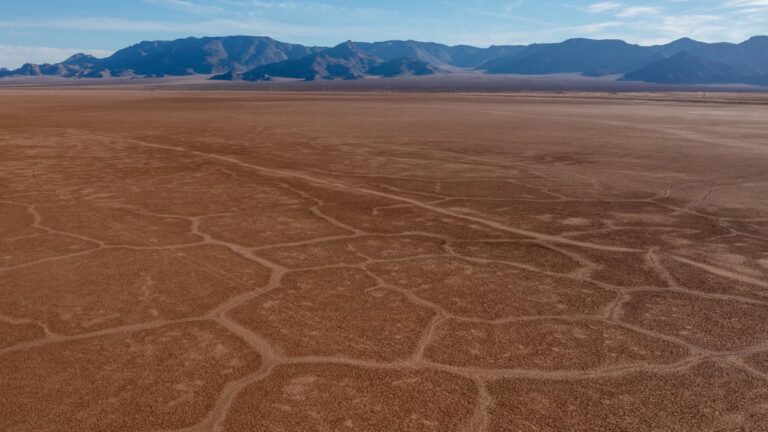Photo: Cracks are seen in Red Lake near an area where geologists have identified what they call polygonal blocks of giant desiccation cracks. GDCs form as underground water and are commonly associated with drought. [Photo: David McNew/Getty Images]
It’s just one example of the state’s wildly unregulated water management.
Along with its arid neighbors, Arizona is 23 years into a megadrought. Some say it might be the worst drought since 800 A.D.
Yet, despite that, a Saudi company has been pumping the groundwater out of Arizona soil for nine years, which it uses to grow crops to feed its cattle 8,000 miles away. That’s just one example Arizona’s glaringly nonrestrictive water management even in the face of unprecedented water shortage.
Arizona: “…a ‘wild west’ approach. ‘You can pump as much water as you want, and nobody is checking… It stands out from the six other states in the Colorado River basin…”
The historic drought has brought Arizona’s unique laissez-faire water system to light. The state allows unregulated groundwater pumping in its rural areas, benefitting ordinary farmers in the short run, but also allowing out-of-state and foreign corporations to take advantage of the resource. As the drought worsens, ordinary Arizonans see the need for more regulation, and the new Democratic governor is trying to usher in new legislation before it’s too late.
Forty percent of Arizona’s water supply is from groundwater—that is, water accumulated in cracks and crevices between soil and sand, which collects in aquifers, underground layers of permeable rock. Water is extracted by drilling into the aquifers and pumping it out through wells.
But Arizona has one of the most lax systems for pumping, which Natalie Koch, a political geographer and a professor at Germany’s Heidelberg University, calls a “wild west” approach. “You can pump as much water as you want, and nobody is checking,” she says. It stands out from the six other states in the Colorado River basin—California, Nevada, New Mexico, Colorado, Utah, and Wyoming—which all regulate their pumping.
Before 1980, groundwater access was a complete free-for-all. But that year—only after federal pressure—the state […]
Full article: In the midst of Arizona’s historic drought, a Saudi company is tapping

